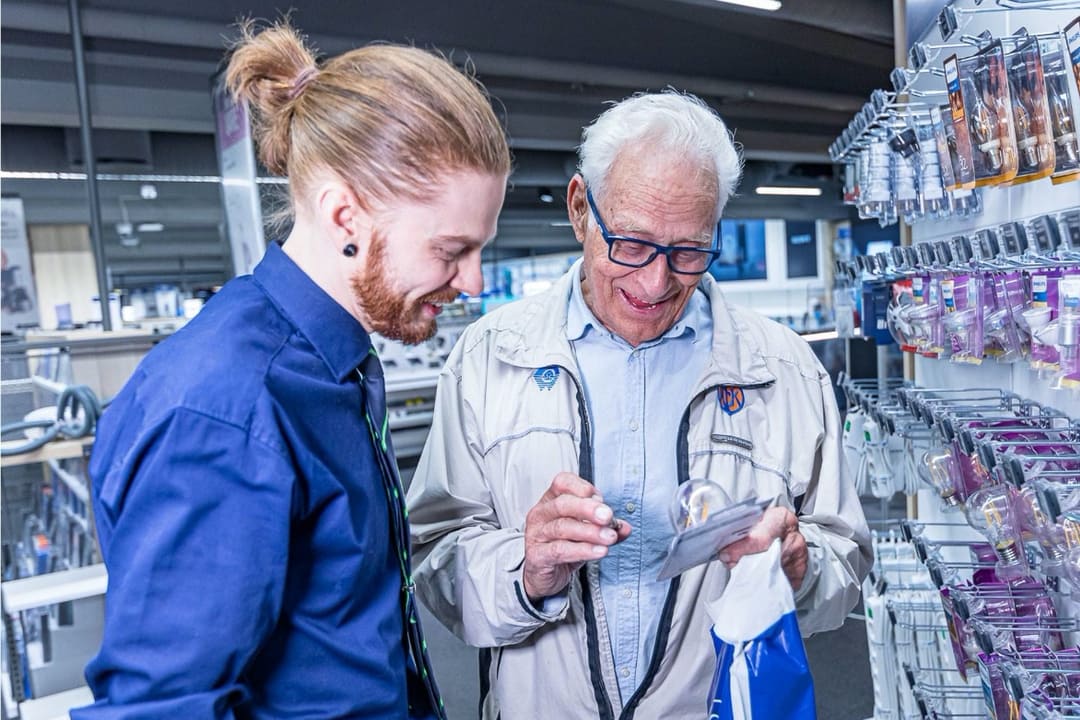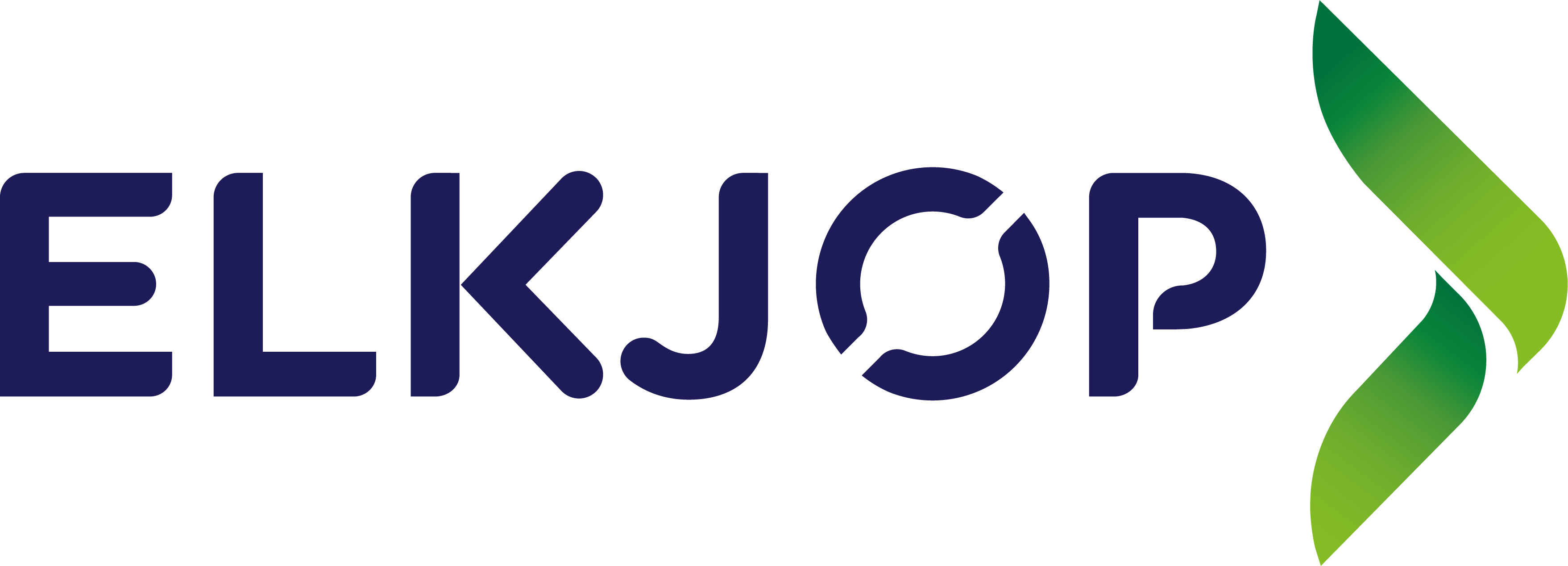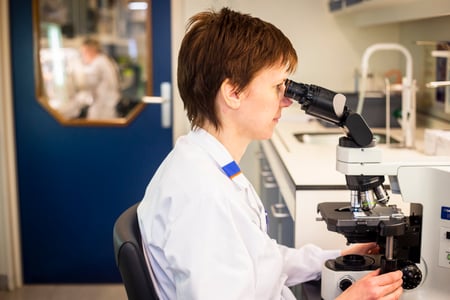Modernizing IT to Create A Data-Powered Next-Generation Retail Experience
- Boost technological agility
- Leverage data to create more impactful shopping for consumers
- Enhance collaboration in the organization
Stiff Competition and Pressure from Online Retailers
The industry is currently grappling with challenges due to the global situation, which has led to a decrease in customer demand. To thrive in this fiercely competitive market, it's essential to not just meet but exceed customer expectations. Gaining the trust of customers necessitates the ability to adapt quickly – both as an organization and in terms of the technology supporting the organization.
It was crucial for leading Nordic retailer Elkjøp to not just keep pace but to lead in this wave of change. Consequently, in 2017, they initiated a substantial transformation and modernization of their entire retail IT landscape. This endeavor was aimed at achieving the necessary improvements in time-to-market, flexibility, and cost structure required to stay competitive in this evolving environment.
This transformation and modernization project is the driving force behind their next-generation retail initiative (NGR). In this new era of NGR, the customer experience is redefined, relying on data and capabilities to enhance efficiency, relevance, and personalization. This is where Ardoq plays a key role.
“The term "omnichannel" is commonly used, but for customers, the concept of a "channel" remains unfamiliar. What customers truly desire is a seamless and uniform experience throughout every interaction they have with us.”
- Trond Andersen, Head of Enterprise Architecture at Elkjøp
Poor Flexibility to Meet Customer Demand
Challenges were many, as the full scope of transformation and modernization was difficult to pinpoint. Elkjøp needed a solution that would help them:
- Understand the big picture from all the low-level IT details
- Understand the business benefit of IT change decisions
- Understand the full impact of a decision on teams, priorities, impacted systems, and interdependencies
- Keep all stakeholders up-to-date and engaged in the transformation work
- Control the scope of change with so many needs and business drivers
Agile product teams were increasingly critical for Elkjøp to develop and deliver fast value to employees and customers that would help them stay ahead of the competition. However, these teams also needed to be empowered with the right information to ensure development was effective and the right teams were involved at the right time.
"To commence our transformation journey, our initial step involved documenting the current state. This enabled us to chart organizational and technical dependencies and lay the foundation for our envisioned future scenario."
- Trond Andersen
To ensure this critical alignment in the organization, Elkjøp needed to:
- Get a proper overview of their application landscape with Application Portfolio Management (APM)
- Understand and map out the business’s capabilities with Business Capability Modeling
- Connect those capabilities to teams and applications
How Ardoq Helped Them Establish a Quick Foundation for Strategic Transformation
Ardoq empowered Elkjøp to quickly sort through the unknowns and fast-track their transformation, speeding up painful onboarding processes.
1 . Getting the As-Is Overview of Their Application Landscape
With over 200 applications in their landscape and numerous in-house developed microservices, Elkjøp needed to find a way to streamline. Application Portfolio Management with Ardoq allowed them to get a top-level perspective to see which applications and technical objects were unnecessary and good candidates for removal.
“One of the systems we replaced had been with us for 30 years. We needed to change into a more composable architecture and move to a more agile way of working.”
- Trond Andersen
Getting the overview of how the entire landscape was interconnected relied heavily on Elkjøp’s IT organization. The project was under a lot of pressure to meet deliverables and timelines. Through the use of Ardoq, Elkjøp was able to keep a high-level view of the application portfolio and its transition stages. Orchestrating and controlling the transitions was imperative as Elkjøp was operating legacy systems and transitioning to the new stack in parallel.
2. Defining Elkjøp’s Capabilities and How They Connect to Teams and Applications
Transparency of their application portfolio was just the beginning for Elkjøp. They also needed to find a way to get transparency in terms of the organization and the adjacent responsibilities to document “who does what.” Business Capability Modelling in Ardoq helped them develop the map that could help anyone in the organization easily answer key questions that had long been challenging to find clear answers to, such as:
- Who is responsible for this?
- Who can make decisions?
- Which teams and applications are related to this?
This meant that anytime they were about to start an initiative, they could look at which capabilities were involved and which capabilities were needed. Teams can quickly understand who they need to consult and how it links up to the existing technology and information via a “toolbox” that Elkjøp had already created in Sharepoint with the insights from Ardoq. This toolbox contained all their development tools, data sources, dependencies, security measures, etc. that are critical for new initiatives. Through this toolbox, Elkjøp can ensure that projects started by product teams align with necessary processes and governance.
They also recently presented their architecture at the SAP Customer Experience Forum in Amsterdam and how they have mapped their business capabilities to supporting applications and building a composable architecture - including SAP business applications - to define semi-autonomous product-aligned teams.
“We see the trend towards semi-autonomous product-aligned teams throughout the industry. The way Elkjøp has captured the areas of responsibility for those teams in a complex IT environment with a significant SAP landscape in our platform is very interesting and has great potential for many other organizations.”
-Jason Baragry, Chief Enterprise Architect at Ardoq
3. Architecture Roadmapping for Different Domains
With an understanding of their technological landscape through APM and how it connects to the business’ capabilities, Elkjøp then had a foundation to start road mapping exercises to address the current and future needs for different domains. Their goal was to evaluate how well-equipped the organization was for its objectives in specific functions and whether they could reach targets with their current technology.
The EA team involved both business and IT people in the road mapping process through whole-day collaborative sessions where they could deep dive into the objectives for both technical and business-oriented focuses and come to a common understanding of what was needed.
Ardoq was used to conduct as-is assessments for the different domains, to evaluate their current applications. Ardoq made it easy for them to involve many people in this process, visualize costs in each domain, and generate clear observations and suggested actions.
The final step was the actual road mapping exercise, where they polled users in these domains on which proposed elements were most important to implement. This allowed them to ensure that they prioritized the most valuable things for each domain from the perspective of hands-on people in each domain. It was a very successful process that aligned both business and IT to reach a common understanding of business and technical performance, thus identifying future needs.
4. Closer Coordination with Owners to Align and Streamline
Elkjøp was also beginning to have closer dialogue with their owner, Currys, to identify opportunities to streamline for both sides. For example, finding opportunities to merge licensing agreements or aligning on the kinds of systems both sides were using. The big question they were trying to answer was, “How to be better together?”
They hadn’t had much dialogue before when it came to processes, capabilities, and IT, so they needed a clear overview of both sides to begin having meaningful conversations about streamlining.
Currys was not using Ardoq but Elkjøp’s EA team managed to put an overview of their architecture in the platform, link them to domains, and then remap how Elkjøp’s landscape was organized to align with Currys’ layout.
From this common structure, they could then see a clearer side-by-side comparison of domains which helped them to create a common ground for conversation. This foundation has already greatly sped up and facilitated dialogue on technology sharing in both directions.
Key Outcomes With Ardoq
For the IT organization:-
- Clearer view of application portfolio and how it supports business capabilities.
- Clearer view of roadmaps for change
- Greater transparency over systems and technology across the organization
- Insight into the business impacts and value of IT changes
- Clear control over required changes and adjacent prioritization
- Easier alignment of all perspectives, technical and business
For the rest of the organization:
-
- Product teams that are empowered to deliver value while maintaining alignment with strategies
- Having a clear language around the business’ technology and capabilities allowing for more effective road mapping and prioritization
- Able to deconflict projects and resources ahead of time
- Clearer evaluation of changes and initiatives involving technology and capabilities in terms of time and cost
- Data-driven analysis of business initiatives with insight into capabilities and technology
Looking Forward
Elkjøp has already made incredible progress with their use of EA to enhance collaboration, improve transparency, and equip their teams for agile development.
Some of the things they will be working on next are:
- Roadmapping exercise for capabilities
- Further evolve Application Lifecycle Management (ALM)
- Cost attribution
- Data lineage and connection capabilities and responsibilities
- Introducing quality and performance indexes
- Providing relevance for a broader audience
- Keeping documentation live with automation
- GDPR, Recovery Time Objective (RTO) and Recovery Point Objective (RPO) strategies
About Elkjøp Nordic
Elkjøp Nordic is the leading electronics retailer in the Nordics, owned by Currys plc in the UK, Europe’s largest consumer electronics retailer. They operate more than 420 stores across Norway, Sweden, Denmark, and Finland. Their systems connect almost 11,000 employees and millions of customers across these markets.Their key drivers with Ardoq are to improve efficiency and deliver a seamless, more personal customer experience to stay ahead in the fiercely competitive retail market.
- Best Practice Guides Application Portfolio Management Business Capability Modeling
- Blog Posts Public Sector Transformation With HMCTS and PA Consulting Enterprise Architecture Governance: The Guide to Why It Matters
- PDF Guides 6 Best Practices for Defining Your Business Capabilities Navigating Turbulent Times With Digital Business Optimization


/Photos/Customers/Cabinetworks/VA_Cabinetworks_-1250%20sq%20crop.jpeg?width=450&name=VA_Cabinetworks_-1250%20sq%20crop.jpeg)

/Logos/Customers/umcg_logo_2025.png?width=200&name=umcg_logo_2025.png)
/Photos/Customers/SpawGlass/SpawGlass.webp?width=450&name=SpawGlass.webp)
/Photos/Customers/SpawGlass/SpawGlass%20Logo.svg)
/Logos/Ardoq/RGB_Ardoq_Logo_Stacked_White_Monochrome%201.png?width=80&height=77&name=RGB_Ardoq_Logo_Stacked_White_Monochrome%201.png)

